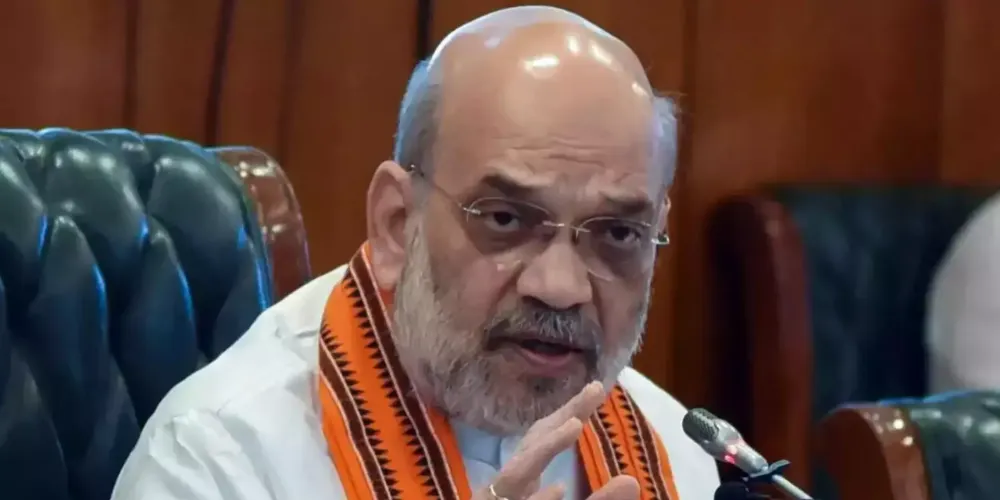Introduction
A significant narcotics seizure in Delhi has once again highlighted the scale of illegal drug operations in the capital. In a joint operation, the Narcotics Control Bureau (NCB) and Delhi Police seized narcotics worth ₹27.4 crore, leading to the arrest of five individuals involved in the drug trade. This seizure is part of a broader effort to curb drug smuggling and dismantle trafficking networks operating across the region.
The latest narcotics seizure in Delhi underscores the persistent challenges law enforcement agencies face in combating the growing drug menace. With the increasing circulation of illegal substances, authorities are intensifying their crackdown on drug syndicates to prevent further damage to society.
Details of the Drug Bust
The joint operation between the NCB and Delhi Police was carried out after intelligence inputs indicated the presence of a major drug supply network in the city. The narcotics seizure in Delhi included a variety of banned substances, with officials recovering large quantities of high-value drugs. The contraband was reportedly being smuggled through well-coordinated channels, involving both local distributors and international suppliers.
The individuals arrested in connection with the case are suspected to be key players in the network, facilitating the movement of narcotics across different states. Investigations are underway to trace the source of the drugs and identify others involved in the operation. This narcotics seizure in Delhi marks another success in the fight against organized crime, yet also serves as a reminder of the extensive reach of such illicit activities.

Impact of Drug Trafficking in the Capital
The rise in drug-related crimes and frequent narcotics seizure in Delhi highlight the concerning spread of drug abuse and trafficking networks. The availability of illegal substances not only fuels addiction but also leads to an increase in related criminal activities, such as money laundering and violent offenses.
Delhi, being a major metropolitan hub, often serves as a transit point for drug consignments moving across India. The presence of organized syndicates and the growing demand for narcotics among different sections of society contribute to the challenge of controlling the supply chain. This recent narcotics seizure in Delhi emphasizes the need for sustained enforcement measures and public awareness to address the root causes of drug abuse.
Strengthening Law Enforcement and Awareness
While successful operations like this narcotics seizure in Delhi demonstrate the efficiency of law enforcement agencies, the fight against drug trafficking requires a multi-pronged approach. Enhanced intelligence sharing, better coordination among state and central agencies, and stricter laws are essential to curb the illegal drug trade.
Public awareness campaigns and rehabilitation programs for addicts are equally important in reducing demand. Community participation, educational initiatives, and proactive reporting of suspicious activities can aid authorities in identifying drug networks before they expand further. The narcotics seizure in Delhi is a step forward, but continuous vigilance and stricter measures are necessary to dismantle the deep-rooted drug cartels.
Conclusion
The recent narcotics seizure in Delhi worth ₹27.4 crore marks a crucial victory for law enforcement agencies in their relentless fight against drug trafficking. This successful operation not only dismantles a key supply chain but also highlights the alarming scale at which illegal substances continue to infiltrate the capital. With five individuals apprehended in connection to this case, authorities have sent a strong message about their unwavering commitment to curbing the spread of narcotics.
However, despite such significant breakthroughs, the persistent threat of drug abuse and trafficking remains a growing challenge. The demand for narcotics is driven by a complex web of factors, including social pressures, economic hardships, and organized criminal networks that continue to adapt their operations. Merely cracking down on supply is not enough—sustained efforts are required at multiple levels to address both the root causes and the consequences of drug abuse.
A comprehensive strategy must involve enhanced enforcement, stricter legal actions, and increased surveillance at key transit points to prevent the inflow of narcotics. Additionally, public awareness campaigns, rehabilitation programs, and community involvement are essential in tackling drug addiction and reducing demand. Strengthening coordination between local, national, and international agencies is also vital to dismantle large-scale networks that operate across borders.
This recent seizure serves as a stark reminder that the fight against narcotics is far from over. Only a multi-faceted approach, involving strict law enforcement, preventive measures, and social responsibility, can effectively combat this growing menace and protect the youth and communities from its devastating impact.
For More Updates – Dailynewfeeds



